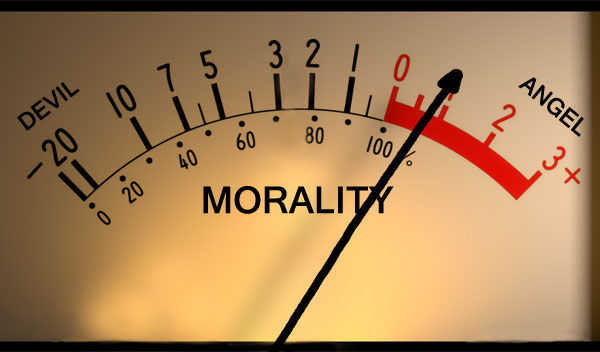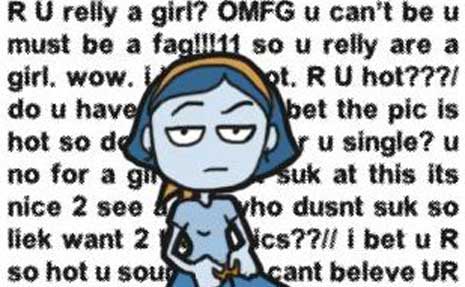Recently there’s been a lot of discussion in the media about the top films of 2013 and the Bechdel test. Movies with real, rounded female characters are doing well, by the numbers, and with award season picking up, we’ll likely see more of these reports. Unfortunately, anyone who studies the gaming industry knows the same success isn’t often true of games with strong female characters, a subset of gaming that’s already quite limited. Because strong female heroines are so few and far between, those games in which the female characters are not overly objectified or that pass the Bechdel test are treated as victories by many. But is that enough? So a woman isn’t relegated to love interest or only focused on man—is that enough?
Telltale’s Walking Dead franchise features a number of rounded female characters. In season two, a young woman is the protagonist, and the episodes have a lot of female characters (though fewer females than males), so the episodes are prime candidates for an exploration of how games perform beyond measures of the Bechdel Test when it comes to female characters. Obviously, there are lots of spoilers here for every episode of the game released thus far.
The Walking Dead, across all episodes and seasons so far, features approximately eighteen female characters with some speaking lines, and twenty if we’re counting all those who have some impact on the story (not counting Clementine’s mother). Of those, ten or eleven could be considered fairly major characters, or have the potential to be in season two, depending on player decisions.
A handful are only plot devices, and this week I will start the examination there, as these women tend to function only in one very specific manner, and it’s here that we find the most egregious dependence on tropes. And while it’s fair to say that TWD is full of tropes (though some are subverted), it’s the dependence on tropes about women that interest me most here.
Jolene & Danielle: Jolene is a crazed survivor who steals Clementine’s hat and screechily threatens folks with her crossbow. She’s depicted with big hair and a country accent, and is still wearing her retail discount store vest (all tropes of a different color). The assumed rape and murder of her daughter Danielle has driven her “crazy,” and she accuses Lee of stealing Clementine. Jolene is a mother driven mad over what she’s seen (and experienced, if she was raped as well), and we don’t get much from her but her “Ax Crazy” behavior when she threatens to shoot some of the characters. Finally, the idea of “replacing” one lost child with another (often a stolen child) is one that recurs in media, but seems more often associated with women rather than men in regard to children (whereas with men, we more often see the replacement/doppelganger love interest).
On the one hand, these are textbook tropes: Danielle’s rape and murder played for drama and backstory, and both women are imminently disposable; the whole moment really only exists so Jolene can say that the bandits aren’t the real threat (and she’s right, and dies for it). But on the other, these are all things that could certainly happen in the scenario as presented. Women get raped. People sometimes experience psychotic breaks after extreme trauma. None of this is unbelievable.
So let’s apply a new test: the replacement. Do we see men threatened with sexual violence in The Walking Dead game? No, though sexual violence against all kinds of people is a recurring threat in the comics, but in the game, we see this instance of sexual violence, and there was a removed storyline involving Ben’s classmates. Also, in the comics, we don’t see random, throwaway characters threatened with sexual violence, but instead members of the main cast, and in most cases, the violence carries weight. Here, some folks got raped. No big deal.
Irene: You may not even know who Irene was unless you look her up, but she was the woman at the motel who wanted to die after being bitten by zombies. She’s a trademark damsel in distress, one who inspires Glenn to first a white knight moment and then a terrible moment in which he expresses dismay that she has (had) a boyfriend, even though she’s been bitten by a zombie.
Irene is ill, she’s delicate, and the scene is played (to good effect) for emotion, even though both the suicide and zombie infection are themselves tropes, they are tropes that tend to play out in a certain way. Men are more often stoic in the face of being bitten. Lee himself keeps going until he drops (but then, he has motivation; Irene is given none). One of the strengths of The Last of Us was the subversion of this trope, but here, Irene exists for only two reasons: to make us all sad, and to show—whichever choice is made—what a good dude Lee is.
Replacement test: If Irene had been male, odds are it would have been a very stiff-upper-lip, stoic scene, with a lot of tamped-down emotion bubbling just under the surface, instead of Irene’s hysterics and Glenn’s white knighting.
Beatrice: Another character whose name you might not recognize: Beatrice is the woman who stumbles out into the street at the beginning of episode three, as Kenny and Lee are preparing to loot the pharmacy. Kenny suggests she be offered up as a sacrifice, which is an interesting subversion of the usual path, which would see men trying to protect her at all costs simply because she is a woman. However, the dramatic, hysterical screaming, the heavy emotion/guilt of the moment, and that it’s another damsel in distress that stops Lee and co all add up to more trope boxes to be checked off the list. This is another scenario that would likely have gone down differently if the potential sacrificed had been a man, particularly since Beatrice does nothing but scream and panic. Every time I play through this part, I wonder how she survived even a day. Of course, we don’t know if something happened to her, but that’s because she’s a disposable woman, tossed out into the street for a brief emotional impact.
Carley: Depending on your decisions, Carley may not be a minor character but a major one, but for me she offered the first real moment of exasperation, a moment I remember in clear relief though it’s been a long time since I played through episode one. Why? Because she couldn’t figure out how to put in batteries. Batteries. That’s taking tech stupidity to a whole new, rather unbelievable level, and it’s not as though she’s some pampered princess, either; she’s an in-your-face reporter who also turns out to be a crack shot, racking up one of the highest body counts in the game. Carley can handle a gun, but not a pair of AAs.
I love Carley. I saved her on every playthrough simply because I liked her, but perhaps that’s why I found some of her forays into tropes all the more troubling. Not only is Carley hopeless with technology and a crack shot, but she is also a serial love interest. At first, she’s attracted to Doug, but if you save Carley, obviously Doug dies… and then she becomes a love interest for Lee, one that was originally planned for further exploration. Of course, as soon as that happens, she’s gone.
Brenda St. John: There is nothing about Brenda, alas, that isn’t couched in tropes. She’s the good ol’ Southern matriarch, even chalking up her cannibalism to the fact that she was taught never to waste anything. She and Katjaa play similar roles in their groups, too: they are both mothers (of boys), caretakers first and foremost, and have come around to some hard decisions and actions. No action heroes, these two, but only mothers, which is, one must guess, all that women of a certain age are fit to be.Katjaa and Brenda also both have accents, similar body types, and hair close to the same length.
What if it had been Terry St. John who’d survived rather than his widow? Brenda is a stereotypical overbearing mother hen who collects everyone and railrods them around the farm when Lee’s group arrives. She’s 100% mom. No one distrusts mom! But what if it had been dad? I think that opens up a fascinating possibility. Herschel, a similar character (minus the evil), was always a little gruff. If he’d been a male Brenda in attitude, would anyone have trusted him? The gender-related questions run deep here on both sides.
That aside, I must say that in general, I found the St. Johns pretty obvious and not terribly interesting overall. The evil redneck family is itself a classic trope, and Brenda, for all the above, might have actually been the most interesting member of the family.
Michelle: Season two so far seems weaker to me than season one, but things have only just begun and I’m willing to give the season a chance to develop. Still, I confess I was disappointed when the female characters encountered in season two all seemed built entirely from tropes, at least at this point, and that started with Michelle. From the moment Clem put down her gun, events unrolled in a predictable, if tragic, series, but it was hard for me to be fully emotionally invested because Michelle was just so empty. Much like the St. Johns, Michelle is predictable and throwaway, but that itself is problematic for me. She’s a nihilistic teenage thug, unconcerned with robbing a child, and while she shows remorse at Omid’s death, everything about Michelle bothered me on some level, though I can’t say it would have been any better if she had been a male, as that would have been predictable in its own ways. Though, per our replacement test, would a man have threatened a little girl? In absentia, Danielle tells us the answer is yes.
A tough call.
Rebecca: Rebecca is just a flat-out jerk, a prime example of the harpy, particularly one who hates other women. Yes, she’s pregnant and worried, but the first thing she does is try to get Clementine killed, and she doesn’t seem to regret it one bit when her reasoning doesn’t pan out. She’s also having an affair, pregnant, and unsure who the baby’s father might be. Any redeeming factors not based in tropes to add drama remain to be seen.
Sarah: I want Sarah to be interesting, but her impossible naivete and ambiguous mental/emotional disorder are hard hurdles to hop. So far, Sarah is only a sheltered, damaged, creepy woman-child, too old to appear and act as young as she does. I hope for a fascinating reveal, but I fear she won’t be much else, and the interesting factor here will be assigned to her father. So far, in fact, all the male characters in season two are more fascinating and well-rounded than the female characters. Alvin’s changeable personality, the dynamic between Pete and Nick, and Carlos’s odd behavior all have the potential for depth. Only nice-guy Luke seems, so far, to only be a nice guy, but there’s even a bit of shallow depth to his sliding scale of what and who is okay to kill in the post-apocalyptic world. When it comes to tropes, so far season two is as pregnant as Rebecca, particularly in terms of the female characters.
Of course, as I said, the male characters in TWD are certainly not trope-free, but there also seems to be a little more effort to subvert tropes with several comparable male characters. For instance, Doug is the token smart guy, a little soft, into robots and tech… but also the first love interest and has some shining heroic moments, even though he’s not an action-oriented character.
The St. John boys, too, are cut from a similar cloth: there’s the college boy and the mama’s boy, and they’re as down-home evil as their mother. But Andrew has his emotional moment when he learns his family is dead, and his brother not only drops several snarky, mumbled clues about the truth, but takes his mother’s reasoning for their cannibalism a step further and actually asks Lee to eat him. I find this rather fascinating—an interesting developmental turn. But how might the game have fared if one or both of the St. John boys had been St. John girls? Why couldn’t our nerd/token smart guy have been a nerd/token smart girl, what with the setting of traps and the electric fence? Alas, it wasn’t to be.
Next week I’ll look at a few more character, including Clementine herself and the game’s treatment of her development in terms of tropes.




